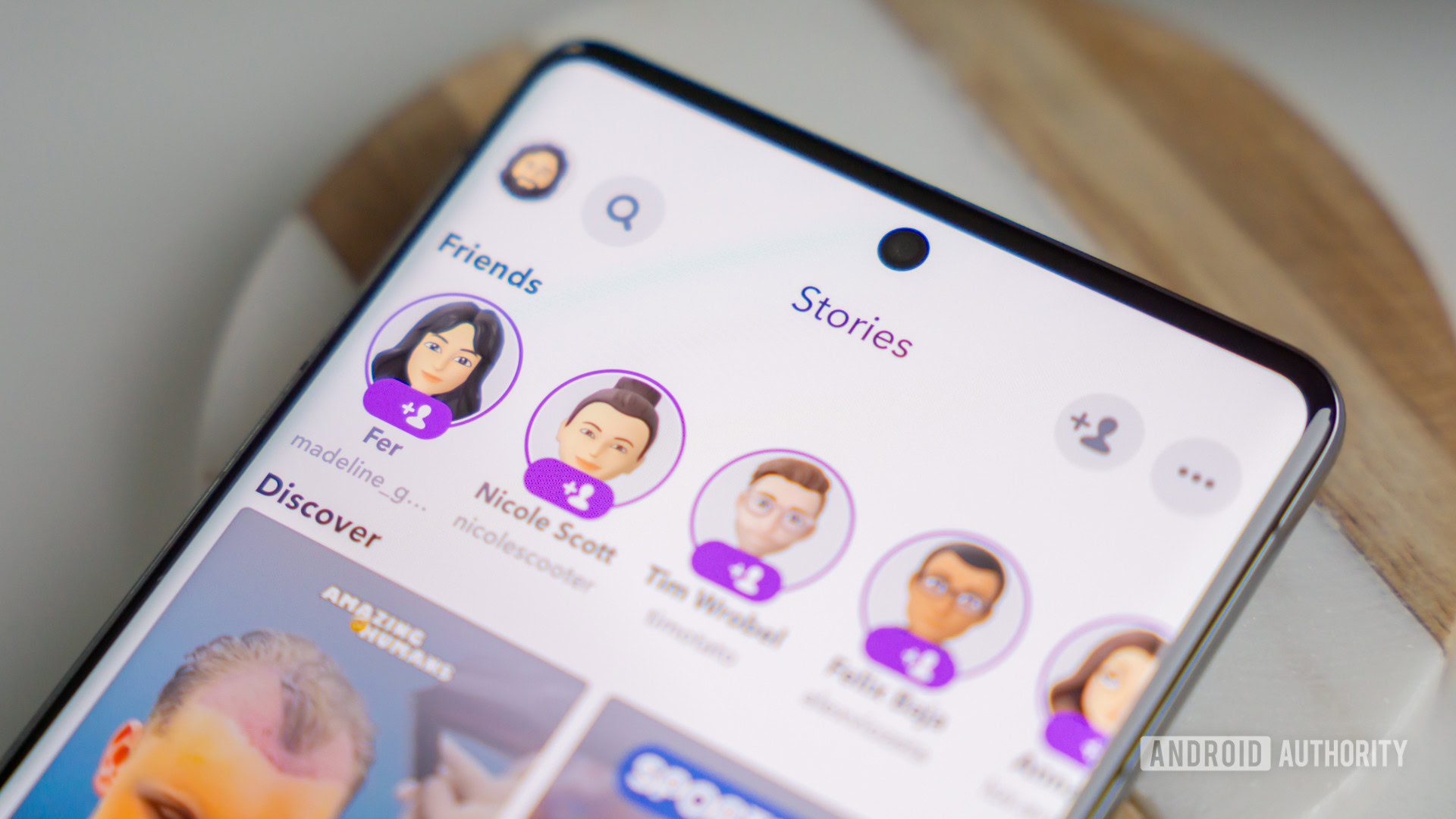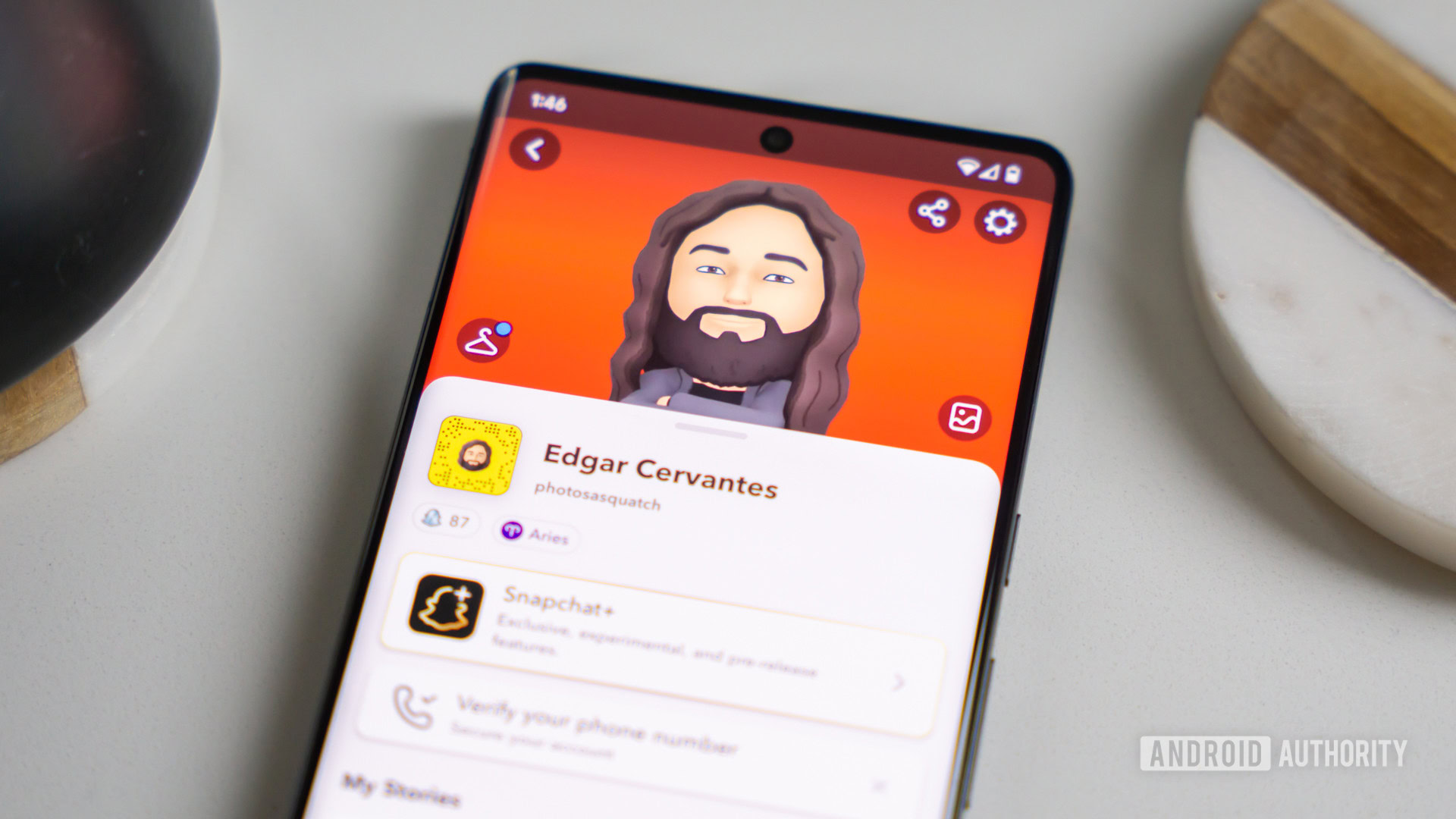Edgar Cervantes / Android Authority
Social media has come under ever-growing scrutiny during the past few years, and with good reason — there are concerns ranging from the body image issues it creates to foreign political influence, and even its role in insurrections and genocides. Snapchat has somehow managed to avoid the toughest controversies, but does that make it safe to use?
What is Snapchat and how does it work?

In short, Snapchat is a mobile app for Android and iPhone where the focus is on photos, videos, or messages that disappear a short time after they’re shared. The concept was originally very unique, but has since been copied by Meta for some Facebook and Instagram features, and even Google in the form of YouTube Shorts.
Snapchat tends not to be in the spotlight these days, but it remains extremely popular. As of Q3 2023 it had 406 million daily active users, and 750 million people using it every month.
The company offers a paid subscription plan, Snapchat Plus, but this is entirely optional. Mostly it offers extra customization and a few additional perks, notably early access to new features and the ability to get Stories viewed more often.
Speaking of which, here’s a quick breakdown of Snapchat’s core components.
Snapchat features
- Snaps: The feature tying everything together, a snap is a photo, video, or (less often) a message sent to another user.
- Stories: By combining compatible snaps, you can build a Story accessible to your followers or a select group of friends. Stories normally disappear after 24 hours, but if you as the creator really like one, you can save it to your Memories archive.
- Memories: A relatively recent addition, this is a private “locker” of sorts for snaps and Stories.
- Discover: This is one of the ways Snap (Snapchat’s parent company) actually makes money. The Discover section of the app features Stories produced by corporate brands and publishers, so you if you’re really invested in the app, you can even use it to get daily news headlines.
- Spotlight: Similar to Discover, this highlights videos from businesses, professional creators, and regular users.
- Chat: Since people often have more to communicate than makes sense for regular snaps, there’s a straight-up Chat component that supports text, live video calls, and even sending money.
- Filters: These are color, time, weather, speed, and other overlays you can apply to a photo or video snap. Of special interest here are geofilters, which are unique to some locations and events. You might, for example, get a special Tomorrowland geofilter when you attend the EDM festival.
- Lenses: These go beyond filters to apply augmented reality (AR) effects. Frequently these change a person’s appearance, but 3D World Lenses can change an entire environment.
- Bitmoji: While Bitmoji is technically a separate avatar creation app, it’s owned by Snap and heavily integrated with Snapchat. Once the two apps are linked, you get access to Lenses using your Bitmoji avatar, as well as Bitmoji stickers in Chat.
- Snap Map: This opt-in feature lets your friends and/or followers see your real-world location on a map, and vice versa. People are usually identified by Bitmoji icons.
- Snapcodes: These are QR codes that you can scan using the Snapchat app to more quickly add new friends in person. Every user has one in their Profile view.
- My AI: This is a generative AI chatbot based on ChatGPT, with some Snapchat-specific additions. It’s relatively controversial, as we’ll touch on later.
Is Snapchat safe for kids and teens?

Edgar Cervantes / Android Authority
Young kids shouldn’t be on Snapchat. A relatively mature 11- or 12-year-old could hypothetically be fine, but the official age requirement is at least 13, and users discovered to be underage are automatically kicked off. That’s rare, however, since the app’s only (normal) age verification involves you reporting your date of birth.
The greater issue is that there are plenty of adults on Snapchat. So while a lot of content is curated and you can adjust privacy settings for Chat, Stories, and location sharing, there’s still a chance a kid will run into profanity, bigotry, consumerism, sexual innuendo, and other things you don’t want them exposed to. It might not happen — kids frequently just want to snap with their friends — but the risk is there, and most kids are savvy enough to undo settings changes if they feel like it.
Perhaps the biggest concern for anyone under 18 is sexual predators. Since Snap is mostly about ephemeral photos and videos, a predator could trick a child or teen into sharing sexually explicit media without there being direct evidence left on the victim’s phone. Meanwhile, there’s nothing stopping a predator from saving screenshots or screen recordings, and if they’re especially aggressive they might try to arrange an in-person meeting. This is all predicated on someone being able to find a target’s Snapchat contact info, however, and worm their way into their friends group.
If you want to let a teen use Snapchat, make sure they’re aware of the threats that exist and encourage them to use the app’s blocking and reporting features. As a parent you’ll want to take advantage of the Snapchat Family Center, which offers help with keeping track of a teen’s friends, seeing who they’ve messaged recently, and limiting access to “sensitive” content.
Is Snapchat safe for adults?

Edgar Cervantes / Android Authority
Generally speaking yes, perhaps even moreso than services like Facebook or Instagram. By adjusting privacy settings, it’s easy to avoid contact with strangers on the service if you want to.
There are two main concerns as an adult, and those are scams and data breaches. Snap has had multiple incidents with data security in the past, and one of the big concerns about My AI is that your conversations are used to improve the company’s products and serve you ads. On that note, we should add that My AI could be problematic for kids and teens too, not just because of data collection but because of Snap’s own admission that the AI sometimes serves up biased or misleading responses. The company is working to train the bot, but we’re not holding our breath.
As for scams, these are likely to be the same as you’d see on other services like Instagram or even Venmo. Some examples include phishing, fake giveaways, get-rich-quick investment schemes, or romance/catfishing cons. Just be mindful of who you follow or befriend on Snapchat, and don’t send anyone money unless they’re known to you personally. Few legitimate relationships or investment opportunities are going to come from an app meant for sharing your fun trip to SoCal.
FAQs
If you trust the other person it should be fine. It may even preferable to some other services, since photos and videos vanish automatically after they’re seen.
“Trust” is the operative word here, since modern smartphones make it easy to take screenshots and screen recordings. Sending nudes to someone you’ve just met could result in them leaking online, maybe even appearing on a revenge porn site.
That’s hard to gauge in concrete terms, but we’d say so. It’s tougher for strangers to get in touch with you on Snapchat, and WhatsApp has over 2.78 billion monthly active users, making it a more obvious target for scammers and predators.
As much as they are on any other platform. If you don’t think you can trust another person, you shouldn’t talk to them, much less show them where you live.
Relatively speaking, but even legitimate online ads are often intended to get you to install an app or share your contact info. You may sometimes be confronted with annoying ads or outright scams, so be skeptical about tapping on anything. If an offer seems too good to be true, it probably is.
As with WhatsApp, this is a comparison we can’t judge on concrete terms. It’s harder for strangers to get in touch with you on Snapchat, though, and Instagram is the more popular service, making it a more logical target for bad actors.
Source link
Roger Fingas













